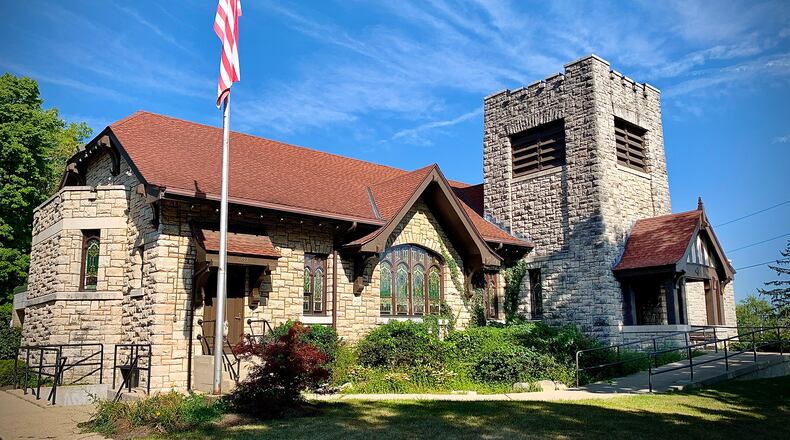Sugar Creek Presbyterian Church had its beginning in the frontier town of Lexington, Kentucky in the 1790s. After Kentucky entered the Union in 1792 as a slave state, the minister of the congregation gave a pro-slavery sermon on Sunday and the congregation split with those members against slavery getting up during the service and walking out of the church.
Seeing slavery as a “sinful peculiar institution,” the anti-slavery half of the congregation decided in 1804 to move to Ohio which had entered the Union in 1803 as a free state. Under the leadership of they Rev. Robert Armstrong, a minister sent by the Presbytery of Scotland, the congregation left Kentucky and settled on new lands in the Bellbrook, Ohio rea. Sugar Creek Presbyterian Church was officially founded on Sept. 2, 1804.
At first the newly organized church’s preaching was conducted in the cabins of member families. By 1811, a log cabin church had been built in what is now called the “Pioneer Cemetery” on Upper Bellbrook Road, a few yards north of the present-day modern cemetery which is north of Bellbrook.
On visiting the Pioneer Cemetery, now in a woods, one can find graves of church members who were born in the 1740s. Each family furnished a quota of logs to build the church and each family constructed its own bench if it wanted to sit down during the worship service.
As the population of Ohio grew, the members tended to buy farmland west of the original log church. By 1832, the congregation needed a larger church, and a new brick church was built on Feedwire Road approximately where the Panda Express Chinese Kitchen stands today.
During this time, Calvinist morality was strictly enforced. No drinking of alcohol was allowed: no dancing, frivolous dress, or marital quarrels were permitted. Absolutely no business was to be conducted on the Sabbath Day. The men sat on one side of the sanctuary and the women sat on the other side.
Despite the occasional disputes, the church continued to grow, and the congregational center tended to move toward Dayton. In the late 1860s, the congregation needed a new and larger building.
The Prugh family sold Sugar Creek Church the land where the present church sits for $10. In April of 1871, the congregation officially held its first religious service in a new sanctuary at the corner of Bigger Road and Wilmington Pike. In 1884 and 1886, the church was damaged by tornadoes.
In 1900, a new bell tower was added to the church, and it was decided that musical instruments could be played, and an organ was installed.
On April 23, 1911, lightning struck the church during a storm, and it burned to the ground. The congregation immediately made plans to rebuild and in June 1913 the congregation celebrated its first worship service in the present sanctuary. In the 1930s, the area under the sanctuary was dug out to enlarge the basement for more Sunday school classrooms.
Sugar Creek’s congregation continued to grow. During the 1950s, the suburbs continued to expand southward, and Sugar Creek Church was no longer a country church. Most of its members were “city folk,” although farm families were still members. Starting in the early 1950s, each June saw a week of Vacation Bible School, and in 1962, the new educational wing was dedicated.
As time passed, Sugar Creek Presbyterian Church also changed with the times. In 1949, Sugar Creek began an exchange program with Trinity Presbyterian Church, the Black church on Lakeview Avenue in Dayton. Also in 1949, the first women trustees were elected, and in 1959 the first woman Elder was elected to serve on the Session, the ruling body of the church.
On Sept. 10, 1997, a second fire occurred at Sugar Creek Church in the basement, caused by an electric pencil sharpener. A passenger in a passing car saw the smoke and the local fire department was immediately notified by the driver. The fire damaged the upper level as well as the basement.
The sanctuary floor had to be replaced, the pews had to be refinished, and the inside of the church had to be completely repainted due to smoke damage. The congregation was able to worship in the sanctuary again in February 1999.
About the Author
